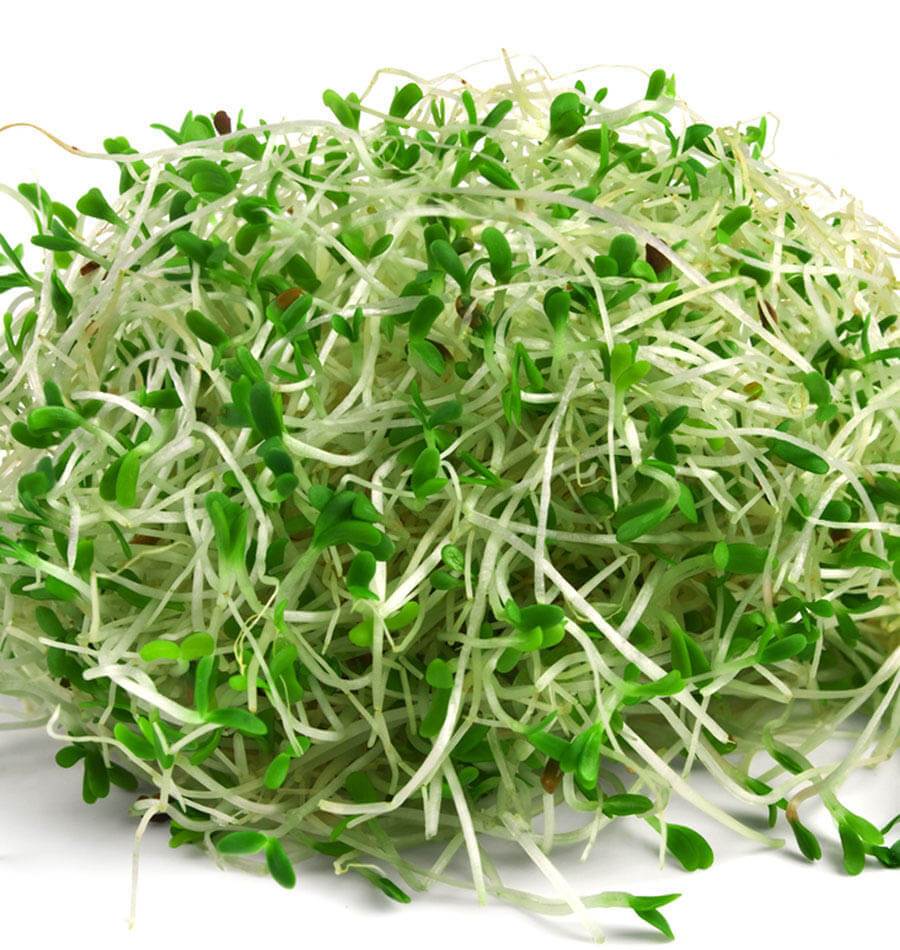
One cup of spinach contains 121 mcg of vitamin K, which is just over 100% of a person’s daily needs. The protein in spinach contains all essential amino acids.

Protein accounts for 50% of its calories.A 100-g serving of spinach contains 2.9 g of protein and 23 calories.One cup (25 g) of raw spinach contains 0.7 g of protein.Spinach has the following protein content: Spinach is one of the most nutrient-dense leafy green vegetables a person can eat.
#Alfalfa sprout how to#
Learn how to make creamy alfalfa sprouts and apple on toast here. How to eat alfalfa sproutsĮnjoy alfalfa sprouts raw in a sandwich or salad or cooked lightly in a stir-fry or soup. Research also suggests that alfalfa sprouts may decrease inflammation, reduce symptoms of menopause, and - as a result of their high vitamin K content - help prevent osteoporosis. Saponins are a group of compounds that can lower cholesterol. This may be due to their high saponin content. This vegetable is a rich source of vitamin K and a decent source of folate, iron, magnesium, phosphorus, zinc, copper, and vitamin C.Īnimal studies have suggested that alfalfa sprouts can reduce cholesterol levels.


Watercress is a rich source of vitamin C, a powerful antioxidant, and it also contains B vitamins, calcium, potassium, and vitamin A. This is an important vitamin for blood and bone health. One cup of watercress contains 85 micrograms (mcg) of vitamin K, which is 71% of the daily recommended intake for adults. Protein accounts for 84% of its calories.A 100-g serving of watercress contains 2.3 g of protein and 11 calories.One cup (34 grams ) of watercress contains 0.8 g of protein.Watercress has the following protein content: Watercress is a cruciferous plant that grows in water.


 0 kommentar(er)
0 kommentar(er)
